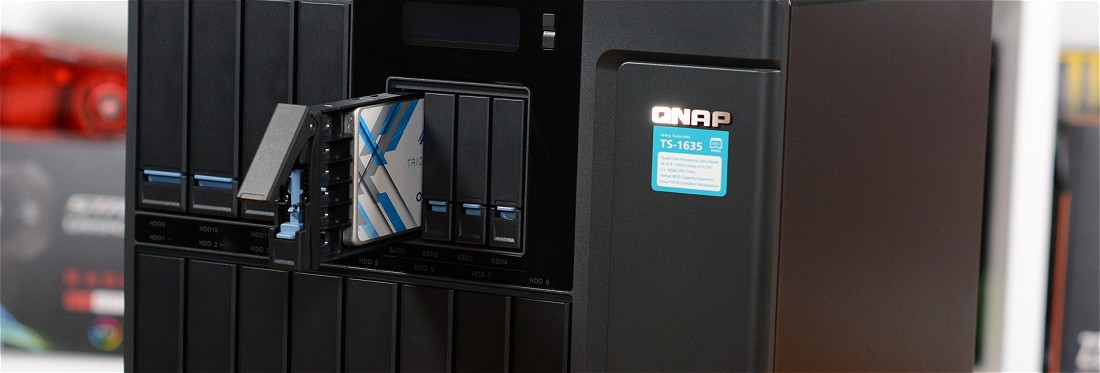Benchmarks
Unless otherwise specified, we tested using four WD Red Pro 4TB hard drives. NAS devices with just two bays were tested using RAID 1, while those supporting three or more drives ran RAID 5. During benchmarking, the NAS device in question was connected directly to a Netgear GS108T v2 switch, while the test PC is always our most high-end desktop using an SSD to read and write the data.
The plan is to start reviewing NAS type devices on a more regular basis at TechSpot so we'll be building up benchmark results from this point forward. For now, only have the Synology TS-853A to compare against.
The TS-1635 puts those four dedicated 2.5" SSD drive bays to use via "SSD cache acceleration" to enhance performance. QNAP says this is perfect for improving the overall workflow of IOPS-demanding applications and allows the best of both cost and performance by combining SSDs with HDDs.
For testing we used the OCZ Trion 150 480GB SSD and set it to cache read and writes. There are two modes in which the SSD cache can operate, accelerate random I/O or sequential I/O.
The random I/O mode is described as only storing small random I/O and is best used for virtualization or database applications. Then there is the sequential I/O mode which is said to accelerate all I/O operations and is best used for video streaming or large file access.
For now we have just three types of file transfer tests that we run so it will be interesting to see if the SSD cache can help boost performance in these tests.

The 4K video transfer test saturates the Gigabit Ethernet connection without the aid of an SSD cache so adding one wasn't particularly useful here. Perhaps if we were able to take advantage of the 10GbE networking we might have seen some gains here, sadly right now we don't have the required equipment.

When transferring hundreds of large 36.3 megapixel photos enabling the random I/O mode for the SSD cache improved the write performance by a very slim 2MB/s while the sequential I/O mode decreased performance, so mixed results then. Another disappointing result can be see when enabling the hardware encryption which reduced read performance by 36% and saw CPU usage skyrocket.

Finally, we have the website backup test which is comprised of almost 11,000 files in 200 folders totaling 1.7GB. Network bandwidth certainly isn't the issue here as we are capped at around 20MB/s when downloading
Here both cache methods were able to boost the write performance though the read results remained at 21MB/s. Still we did see up to a 25% boost when using the random I/O mode as the throughput hit 25MB/s.

